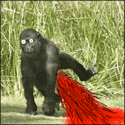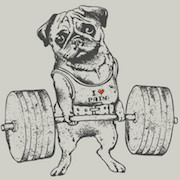|
What's up goons; I recently took up the study of HEMA after months of getting fatter and bored-er doing jack poo poo, and decided my 6 or so hours of classes thus far make me completely qualified to make a thread about it. This will be my first OP for literally years so please bear with me while I make it good! I'll begin with some general information about HEMA for the unfamiliar, please let me know if there's anything else I should throw into the OP. In the interests of readability I'm going to break this up into two posts, one a general introduction to the subject and its more popular weapons, the other about actually doing it. What the gently caress are Historical European Martial Arts you dweeb? Historical European Martial Arts (often referred to as HEMA), to steal briefly from Wikipedia, could be defined as an attempt to re-interpret and re-construct martial arts that had previously either died out, or evolved into very different forms in the modern day. In particular, HEMA right now focuses on 14th-19th century swordplay from Europe. However, whereas modern-day sport fencing became much more a sport, HEMA keeps closer to what these fighting styles were meant to do, which was to kill dudes. In practice this means that unarmed techniques (grapples, locks, breaks etc) are taught along with the swords and often combine, especially when it comes to using a single weapon. So how is this all bought back to life then? Martial arts back in Middle Ages and Renaissance Europe were transmitted through a myriad of ways. Treatsies (or manuals), plates, tapestries and other artworks, literature and good old physical instruction were the usual ways combat techniques spread. In the modern day, rigorous scholarship and experimentation has been bringing what information we can find on these arts back to life, from the very first reconstructions of around 1890 to the modern information age. As a result, HEMA is as much about historical study as it is about beating people up with swords. Much like any martial art, this takes places via drills, sparring and competitions, which are growing in size and sophistication year-on-year. I'll go into more detail on these later on. What kinds of swords, exactly? The actual practice of HEMA is restricted by many factors. In particular, the availability of sources and the safety of practicing the weapons means that there are limits to what schools focus on, what can be sparred, competed and drilled with and to what intensity. As a general rule the bigger the weapon, the less safe it is, and the more protection is required to fence safely with them. And along with that, the more information there is for a weapon, the more it's going to be explored. Allow me to briefly introduce some of the more popular choices in the scene: Longsword  Pictured: Joachim Meyer fencers demonstrating the Ox and Plow guards. Of all the historical weapons, the humble Longsword by far has the most surviving sources available, and is thus the most widely studied in HEMA. Flexible but sturdy, both German and Italian masters from Fiore to Meyer took this weapon far and wide. Longswords have a wealth of techniques available to them, and a wide variety of styles too, from the safer Federschwerts pictured above from Meyer's treatise Kunst des Fechtens, to heavier blades meant for the battlefield. If you've ever played a video game or watched Game of Thrones or LOTR, whatever, you already know what these look like. Rapier/Sidesword  Pictured: Giganti fencers stabbing the gently caress out of each other while bareass naked. Ever wanted to be Zorro irl? Rapiers are the way to go. While maybe not as light as Zorro may make them look, they're elegant, stabby and were an essential part of any nobleman's outfit once upon a time. Sideswords often went along with rapiers a their chunkier, shorter bigger brother, being a transitional phase from the earlier "Arming" sword to what we would know as a rapier. Many techniques apply to both; in particular, I myself am currently studying from Marco Docciolini's treatsie with my own group, which straddles the border between both weapons. Sword and Buckler  Pictured: A folio from the I.33 book on S&B, the oldest known proper treatise on medieval martial arts. Sword and Buckler is almost as widespread a weapon configuration as the longsword, being featured in some form in almost every medieval martial art known to man. Small but deadly, Sword and Buckler lets one defend and attack simultaneously. Many kinds of swords can be paired with a buckler, with manuals often featuring a section on its chosen variety of sword and the buckler. Much like the Longsword, it's hard to go wrong with studying this. Now of course, that's not all that gets played with, but the above weapons generally receive the most attention and thus it will be easier to find clubs studying those, and their respective treatises. Now I'll move on to how one can actually get doing this IRL below. My Crab is Fight fucked around with this message at 00:08 on Jun 8, 2018 |
|
|
|

|
| # ? Apr 29, 2024 01:37 |
|
Reserved, WIP, will probably have this completed tomorrow. Will have info on clubs, competitions, gear, Youtubes etc.
My Crab is Fight fucked around with this message at 00:09 on Jun 8, 2018 |
|
|
|
quote:Love how happy these little dorks are.
|
|
|
|
Thoughts on m1 op
|
|
|
|
I think there’s a Fencing thread somewhere on these forums and it has hema talk in it
|
|
|
|
barkbell posted:I think there’s a Fencing thread somewhere on these forums and it has hema talk in it I had a look around here and the other Sports subforums and couldn't find one
|
|
|
|

|
| # ? Apr 29, 2024 01:37 |
|
I dunno where it is but gently caress that thread
|
|
|







